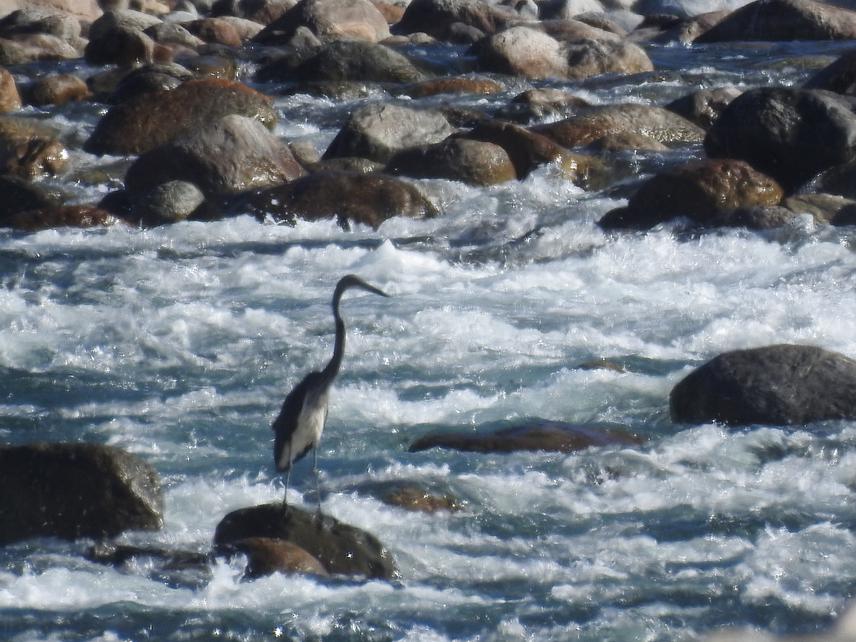Megha Rao
This project aims to understand the distribution of two globally threatened bird species – the White-bellied Heron (Ardea insignis; WBH) and the White-winged Duck (Asarcornis scutulata; WWD) – in north-east India, through an occupancy based survey. As of now, there exists a knowledge gap pertaining to the various extant populations of these two birds in India. This project aims to survey the two states of Assam and Arunachal Pradesh, in north-east India which will help identify locations of existing populations of the two endangered birds. As a result of this study, key hotspots for the conservation of the WBH and the WWD will be known. Field-based surveys will provide an insight into the ecological factors that might be influencing the distribution and the population status of the two bird species. We also aim to generate awareness among the local community members through a community-based initiative of the project.

White-bellied Heron.
The White-bellied Heron (WBH) is listed as Critically Endangered and the White-winged Duck (WWD) is considered Endangered, as per the IUCN Red List. The WBH is distributed from Bhutan through Arunachal Pradesh to eastern Myanmar. The restricted population indicates that north-east India is an important area for the species. The WWD has a fragmented distribution from north-east India up to Viet Nam. The states of Arunachal Pradesh and Assam, in which the WBH and the WWD are known to be found, are vast in expanse. Therefore, important drainages in the region will be identified and surveyed. In order to systematically look for the WBH, an occupancy framework model will be used to survey the various rivers/rivulets/streams across eight major drainages in the region. This will provide an extant distribution map for the WBH in India along with several other riverine species as obtained from the secondary data. The lakes and ponds in the study site will similarly be surveyed for the WWD. However, since this species is extremely elusive, the questionnaire-based key informant surveys will be a more rigorous source of data for the WWD. The questionnaires will be targeted at people who frequent the forests and rivers, mainly the Forest Department staff, local community members, and researchers or tourists. Both approaches will ultimately result in the identification of hotspots in Arunachal Pradesh and Assam for both the WBH and WWD. Ecological data and anthropogenic factors recorded will help ascertain the reasons for their limited distribution and possibly low abundance.
This project will be the first systematic distribution survey for the WBH and WWD. During the questionnaire surveys, members of the local community will be identified to help create awareness about these species in their area. These volunteering local guardians will not only help educate the local community about the adverse effects of hunting these birds and overfishing but will also provide us with data from the study area even after the surveys are complete. This will help us monitor the various populations remotely and give us an idea of possible new locations where these species are found and if there are any additional impacts being experienced by them.
A comprehensive survey of this nature will help explain potential reasons for why these species are not more widespread in the country and to this end; several important factors such as anthropogenic activities along the rivers and lakes will be recorded.